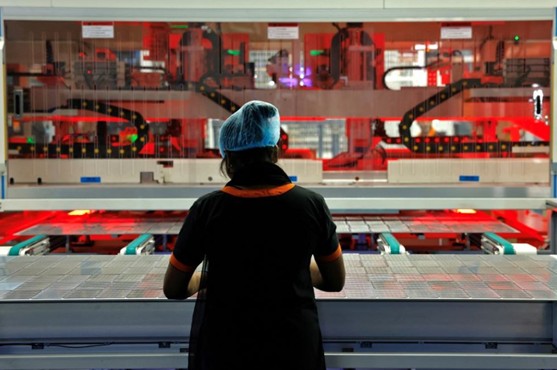
Challenges for Women in India's Green Energy Sector
In India, where the government has ambitious plans for net-zero emissions by 2070 and a full transition to clean energy by 2050, there is a growing demand for skilled workers in sectors like solar energy. However, women are disproportionately excluded from this workforce.
- Cultural and Societal Barriers:
Mona Kumari, a 23-year-old from Rajasthan, attended a government-sponsored solar training course with the hope of securing a job in the booming solar industry. Despite completing the training and learning technical skills like solar panel installation, her family prevented her from working at distant solar project sites due to a lack of facilities like transport and washrooms. This is a common issue, with many women facing reluctance from families to send them to male-dominated, remote job sites. - Low Female Representation:
Data shows that only 11% of the clean energy workforce in India is female, compared to the global average of 32%. This disparity is particularly pronounced in the solar sector, where many roles require educational qualifications that rural women often lack, such as schooling up to the twelfth grade. Additionally, families are often reluctant to send girls to work on projects in remote locations.
Gender-Responsive Policies at COP29
At COP29, held in Baku, activists expressed frustration over the lack of emphasis on gender in discussions around climate change solutions. Despite a global push for gender-responsive climate policies, some socially conservative countries have hindered progress, potentially derailing efforts to address gender disparities in green energy job opportunities.
- Missing Gender Focus in Climate Talks:
Negotiators have struggled to renew initiatives aimed at advancing gender equality in the context of climate change. This gap threatens to exacerbate gender inequalities in the green workforce as countries like India build their clean energy capacity. - Gender Equality in Green Jobs:
Experts like Lorena Aguilar, a gender specialist, emphasize that the green transition offers a unique opportunity to create job roles that are not culturally defined by gender. If both men and women are equally involved in green sectors, it could help close the gender gap in clean energy industries.
The Need for More Focus on Green Skills for Women
India's ambitious green job creation goals—projecting 35 million green jobs by 2047—highlight the potential for women to participate in this growing sector. However, a significant barrier to women's involvement is the lack of gender-sensitive training programs and support systems.
- Training and Accessibility:
While government initiatives like the Skill Council for Green Jobs aim to equip young people with the necessary skills for green jobs, most trainees are male, with women comprising only 15% of those enrolled in green skills courses. The reluctance to send women to remote sites without basic facilities like washrooms is a key reason for this underrepresentation. Industry leaders are calling for more investments in gender-sensitive training and infrastructure improvements to make these sectors more accessible to women. - Women in Solar:
The "Solar for She" initiative by the International Solar Alliance (ISA) aims to address these disparities by actively recruiting women into the solar sector. Despite the push, many on-the-ground projects still prefer hiring men for roles involving heavy lifting and technical tasks, further limiting women's opportunities.
Opportunities for Women in Local Solar Projects
While large-scale solar projects may not create jobs for women on the same scale as for men, decentralized rooftop solar installations offer significant opportunities. These projects, which aim to provide free electricity to millions of households, are more accessible to women as they often involve work close to their homes and can be performed without the need for heavy machinery.
- Training for Local Projects:
India's decentralized rooftop solar initiative, which trains youth to install solar panels in their communities, has created a new avenue for women to enter the sector. However, despite women like Kumari expressing their willingness to work and their technical competence, gender bias in training centers still leads to men being preferred for these roles.
The Path Forward
To address the growing demand for green skills, there is an urgent need for policies that integrate gender equality into green energy sectors. At COP29, industry leaders must commit to increasing gender representation in green jobs through more inclusive training, better working conditions, and addressing the cultural barriers that limit women's participation. Additionally, international frameworks should be established to ensure women's voices are heard in climate discussions and that their contributions to the green economy are recognized and supported.
In conclusion, the green transition has the potential to reshape economies and create millions of jobs. However, without concerted efforts to close the gender gap, women, particularly from marginalized communities, risk being left behind in this critical shift to a sustainable future.